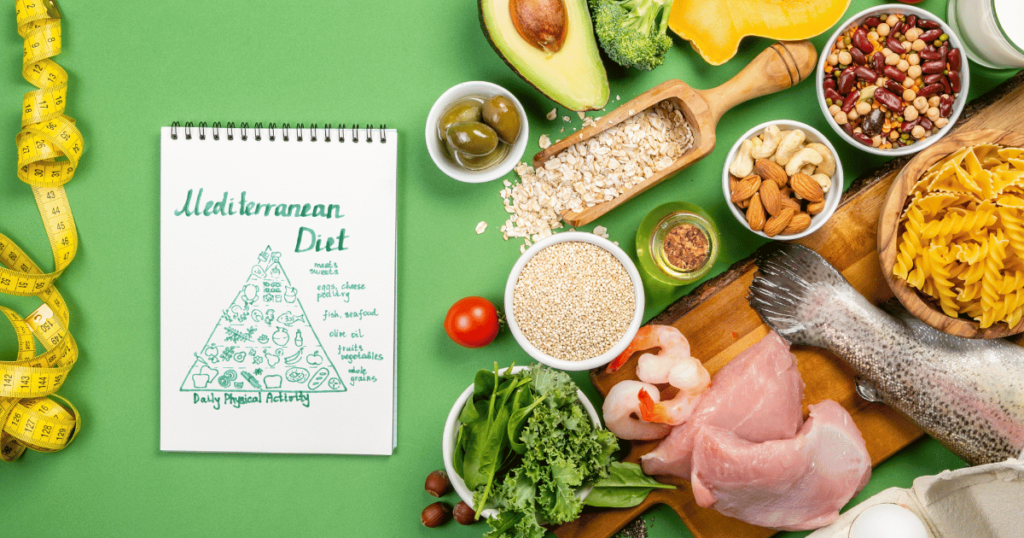A Fresh Perspective on a Timeless Tradition

In the landscape of nutritional trends, the Green Mediterranean Diet emerges as a verdant twist on the classic Mediterranean diet. This newer variant champions the principles of plant-based eating while maintaining the core values of its predecessor. This article ventures into the heart of the Green Mediterranean Diet, unraveling its health benefits and environmental virtues.
The Green Mediterranean Diet: A Closer Look
The essence of the Green Mediterranean Diet lies in its emphasis on plants. While it retains the Mediterranean diet’s foundation of fruits, vegetables, whole grains, and healthy fats, it minimizes meat consumption, favoring plant proteins and greens. This diet is not just about what you eat, but how those choices impact your health and the environment.
Nutritional Powerhouse
A Symphony of Vitamins, Minerals, and Antioxidants
Diving into the nutrient-rich world of the Green Mediterranean Diet, one discovers a treasure trove of health benefits. The abundance of fruits and vegetables, from the leafy greens of kale to the vibrant oranges of bell peppers, provides an array of vitamins and antioxidants. These nutrients are the sentinels of health, guarding against illness and bolstering your body’s defense systems.
A Heart’s Ally
The diet’s focus on monounsaturated fats, primarily from olive oil, and the inclusion of omega-3-rich nuts and seeds, creates a heart-healthy eating plan. Research highlights its efficacy in lowering harmful cholesterol levels, a common precursor to cardiovascular diseases.
The Weight Management Wonder
The Green Mediterranean Diet also excels in aiding weight control. Its high fiber content from whole grains and legumes ensures a feeling of fullness, curbing the urge to overeat. This natural approach to portion control is a cornerstone of sustainable weight management.
The Environmental Connection
Treading Lightly on the Earth
The diet’s reduced meat consumption has profound environmental implications. By focusing on plant-based foods, it demands less in terms of water, land, and energy, crucial factors in today’s climate-conscious world.
Integrating the Green Mediterranean Diet into Your Life
Embracing Change Gradually
Adopting the Green Mediterranean Diet is a journey, not a race. It’s about making incremental changes that align with your lifestyle and preferences. Start by incorporating more plant-based dishes into your meals. For instance, if you’re used to having meat at every meal, begin by designating one or two days a week as ‘plant-based days’. Gradually increase these days as your palate adjusts. You can also start by substituting plant-based proteins like lentils, chickpeas, or tofu in familiar recipes. This slow transition allows your taste buds and digestive system to adapt comfortably, reducing any sense of dietary shock.
Another approach is to start with the meals you feel most comfortable changing. For some, breakfast might be the easiest meal to begin with, incorporating options like oatmeal topped with nuts and fruits, or a vegetable-rich smoothie. The key is to make these changes enjoyable and stress-free, fostering a positive association with the new diet.
The Joy of Plant-Based Cooking
Embarking on a plant-based diet opens up a world of culinary creativity. The Green Mediterranean Diet, with its rich array of vegetables, fruits, grains, and legumes, offers endless possibilities for delicious and nutritious meals. Begin by exploring simple recipes that incorporate familiar ingredients with a twist. For example, a traditional pasta dish can be transformed with whole grain pasta, a rich tomato sauce, and a variety of sautéed vegetables.
Don’t hesitate to explore international cuisines that are naturally rich in plant-based dishes, such as Indian, Thai, or Middle Eastern. Many of these cuisines use herbs and spices that can introduce new and exciting flavors to your palate. Cooking classes, online tutorials, and cookbooks focused on plant-based recipes can be excellent resources. Remember, the joy of cooking comes from experimentation and the pleasure of tasting your creations.
Whole Foods: The Cornerstone
The foundation of the Green Mediterranean Diet is whole, unprocessed foods. This means choosing foods that are as close to their natural state as possible. Fresh fruits and vegetables are staples, rich in vitamins, minerals, and fiber. When selecting grains, opt for whole grain versions like brown rice, quinoa, and whole wheat pasta, which provide more nutrients and fiber than their refined counterparts.
Incorporating whole foods also means preparing meals from scratch more often. This not only gives you control over the ingredients but also reduces your intake of the hidden salts, sugars, and preservatives commonly found in processed foods. This shift might seem time-consuming at first, but with a bit of planning, it can be seamlessly integrated into your routine. Batch cooking and preparing ingredients in advance can make this transition smoother.
Green Mediterranean Diet
In Conclusion
The Green Mediterranean Diet stands as a beacon of health and environmental consciousness. It offers a sustainable approach to eating that benefits your body and the planet. The journey to a healthier lifestyle can be both enjoyable and fulfilling, with each plant-based meal bringing you closer to wellness.


